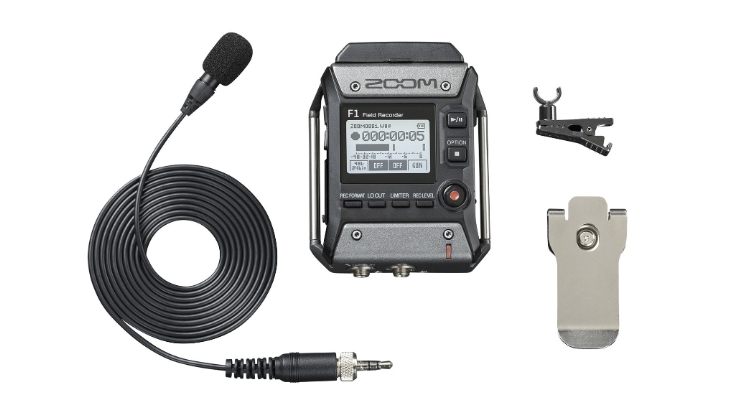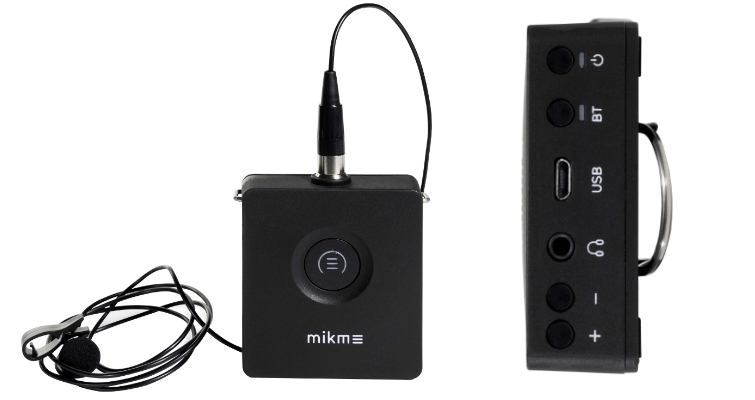
High-End Audio in Budget-Friendly Field Recorders
Here’s a round-up of some of the better field recorders for budget conscious creators, along with their supplied lavalier microphones.
Usually, audio recorders and the term “small budget” is a combination that strikes fear in any content creator. If you haven’t got access to an audio specialist then the utmost care needs to be given to capturing audio, especially the voice.
The good news? Things are getting better in the lower-end budget world and now there are some professional features appearing on low cost audio recorders—enough even to give you confidence in capturing your own sound separately.
Not too sure about the difference between a field recorder and recording straight into your camera? Our friend Lewis McGregor demonstrates the difference in this tutorial.
Here’s the latest in budget audio field recorders and their lavalier microphones.
Zoom F2-BT

The Zoom F2 comes in two flavors with the BT version standing for Bluetooth to give you access to the Zoom app and the UltraSync BLUE device that writes timecode to files. If you’re not going to be recording audio for video, then go for the F2 (it’s around $50 cheaper).
However, the app does allow for remote recording, battery levels display, output volume adjustment, and some low-cut rumble filtering. It’s worth the extra money for the remote record feature alone, especially if you’re capturing audio covertly or in dangerous places.
However, these details are incidental and pale in comparison with the real news about the Zoom F2, which is a little bit of digital wizardry. The game-changing feature in this small recorder is that it records 32-bit floating point .wav files (an uncompressed broadcast-ready file). This might not mean a lot to you, but it basically means you have a huge amount of headroom to record audio.
In fact, you’ll notice that there’s no input gain control on the F2. This is because you won’t be able to clip your recordings. The dynamic range represented by a 32-bit floating point is 1528db, far more than you’ll ever need in a computer file. You just plug in your microphone and press record without fear of a mangled result.
It also means that when you start editing your 32-bit floating point file, you can raise the volume without any extra noise coming up. This high-end file structure is something you usually find in a kit from Sound Devices, who make sound recording gear for the biggest budget movies and television.
The F2 won’t replace their units, but you could find a place for such a small unit in a remote setting, supplementing other recorded tracks. The unit is definitely small enough for the job but maybe not sturdy enough. Unfortunately, you can’t have everything for under $200.
The LMF-2 Lavalier microphone that comes with the F2 and F2-BT is a good match for the recorder and will get you started until you decide whether something more expensive is needed.
Zoom F1-LP
If you want a recording device that’s smaller than the F2, take a look at the F1. To be fair, the F1 isn’t a new product but a good reference for the F2. This again isn’t a device for your sound bag—more for your belt or pocket. It’s smaller than the F2 and hasn’t got the 32-bit recording feature. You’re stuck with 24-bit 96kHz .wav files. These are still good, but you’ll need a limiter and the auto-level control that the F1 offers.

However, with care on your recording levels, you should be fine. You just haven’t got the carefree zero clipping world of the F2.
Recording options include the .wav option and MP3 to extend your recording times. You get 48 to 320 kb/s in MP3 format with seventeen hours of lithium battery life with recording directly to micro SD and SDHC cards up to 32 GB.
I’ll let you do the math on how long a recording could be. But, it does point to the F1 being an audio diary product without degrading the audio too much (320 kb/s is the data rate that Spotify currently uses).
The micro USB connection lets you use the F1 as a 2in/2out audio interface for iOS devices and computers, and there’s a two second pre-record feature for that snap interview opportunity or Vox Pop.
The Zoom F1 is slightly more expensive than a Bluetooth-less F2 but, if you’re after the smallest form factor for your audio recorder, then this might be the one. Even as a back-up device, it makes perfect sense and could be a lifesaver.
MikMe Pocket
Our third budget field recorder is inevitably based on the smartphone. The MikMe Pocket is designed to work with smartphones over Bluetooth for audio only or as the audio for the phone’s video.

Basically, MikMe becomes a virtual mic pack for your subject to wear with an attached lavalier microphone.
First connect your phone to the MikMe via Bluetooth from the pair button on the bottom of the recorder. With a single press on the round button on front, you’re recording as it turns red. Then, press again to stop recording.
But, all parameters are controlled from the MikMe app on your phone. So, in a real-life situation, you’ll be pressing the record button from the app which lights up the corresponding MikMe record button.
The App can control up to three MikMes for one smartphone. From there, you can record, control, and edit your audio tracks, as well as change the video resolution, frame rate, focus, and exposure directly. You can also brand your content with your own logo for distribution and directly share it on all your channels.
MikMe comes with a lavalier microphone, but there’s an option to buy their Pro product. Pro offers a mini XLR connector and much better frequency response.
All recordings are backed-up on the MikMe, as well as your smartphone with 16GB built-in storage. You can record in .wav or M4A format with sampling frequencies of 44.1 kHz, 48 kHz, 96 kHz at 24-bit. Audio capture levels are controlled on the app with a waveform clipping overlay.
MikMe seems to be a good product for the growing smartphone filming market. At over $300, it seems expensive, but it has good app support. Again, you get a starter lavalier but their Pro version might be worth considering once you’ve experienced the limitations of the free one.
Sennheiser Memory Mic
This Sennheiser product has been around for a couple of years and does a similar job to the MikMe, but at half the price. Again, it’s for smartphones and is app-driven by a Bluetooth connection.

If the Memory Mic was from anybody else but Sennheiser, you may overlook it as it doesn’t appear exactly cutting edge. But, maybe that belies its simple operation and target market. The microphone is built-in to the clip-on pack with a metal protector on top. It’s an omnidirectional condenser design, so potentially better for voice recordings than a similar dynamic version.
Claimed frequency response is 100-20,000 Hz and data rate is 48 kHz/16 bit, so no audiophile-like sound here. You have around four hours of operation with the built-in battery, but the weight is only 30g. So, store it in your pocket until you’re ready to shoot.
So, is Memory Mic worthy of inclusion here? Yes, mainly because it doesn’t pretend to be anything else but a quick way to record sound for your smartphone videos. Recording is localized on the device so you quickly realize that it isn’t necessary to be close to your subject—all audio synchs to your phone after a take. You can then design a shot that doesn’t need the subject in the frame at all times, so it’s potentially much more interesting.
The mic pack design isn’t to everyone’s taste and comes in only one color, which stands out for the wrong reasons. However, with a clip on the back, you can be up and running quickly. This is especially helpful with subjects lacking patience.
For more audio tips, tricks, and resources, take a look at these:
- The 3-Tier Hierarchy for Ranking Audio Recording Gear
- Helpful Tips Every Audio Engineer Wants You to Learn
- Prevent Hard Audio Cuts with Natural Reverb
- The RØDE VideoMic Go Audio is Terrible: Here’s How to Fix it
- Smash Cut Audio: An Exciting Edit for Your Next Film
Cover image via EF Stock.





